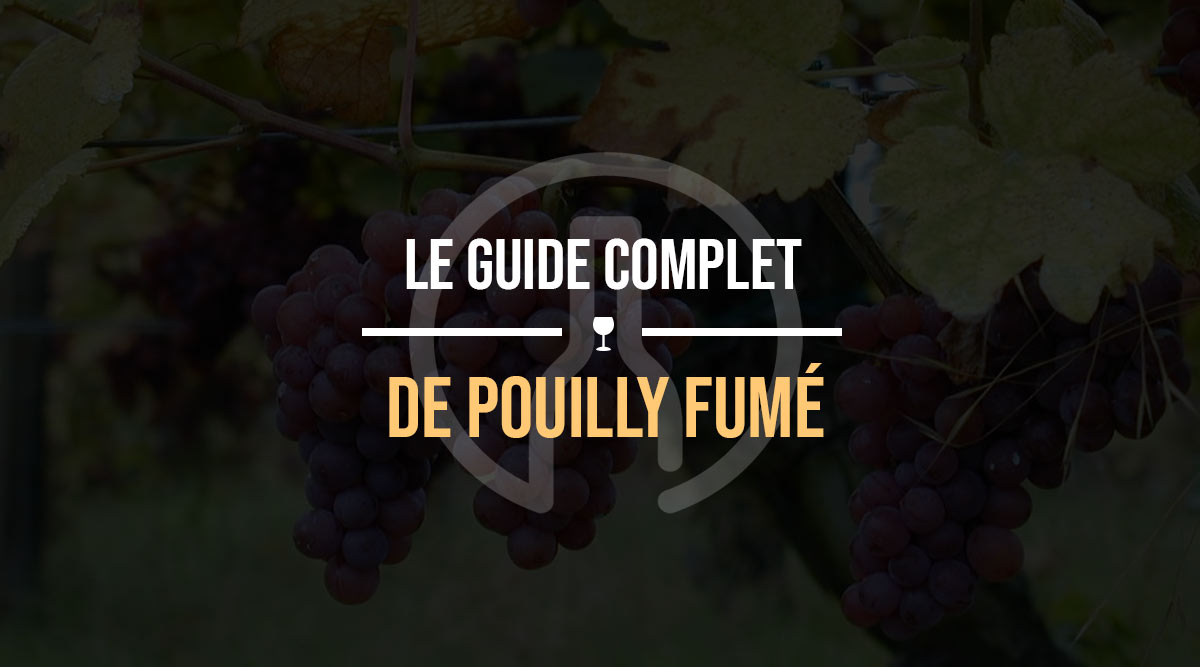Known the world over!
Not to be confused with its namesake Pouilly-Fuissé, which comes from Burgundy. Pouilly-Fumé comes from the Loire region and is made from Sauvignon grapes. The wine can be produced in seven communes: Pouilly-sur-Loire, Saint-Andelain, Tracy-sur-Loire, Mesves-sur-Loire, Garchy, Saint-Martin-sur-Nohain and Saint-Laurent-l'Abbaye.
The etymology of its name is explained by its origin, as the heart of the appellation lies in the commune of Pouilly-sur-Loire, and by the wine's "smoky" shape and taste. Once ripe, the grapes are covered with a thin, gray, smoky film called the pruine. The word "fumé" is also used for its distinctive aromatic style. Pouilly wines are said to have flinty aromas, as if we were rubbing two flints together and a slight smoky odor was released.
The climate and terroir of Pouilly-Fumé
The Pouilly-Fumé vineyard covers 1,300 hectares, planted exclusively with Sauvignon Blanc.
It benefits from an oceanic climate, which gives the vines a true sense of seasonality, with cool winters and hot summers.
There are 4 very distinct soil types, each of which gives Sauvignon its own particularity.
On limestone soils, wines reach maturity more quickly. They are tauter and more nervous. These wines release more freshness and more white fruit.
For Kimmeridgian soils, you'll need to wait a year or two before tasting the wines properly. Pouilly wines will be more mineral, with floral and smoky notes.
In the case of flinty clay soils, the wines will be deeper and require longer cellaring before they can be enjoyed. After a few years, the wine will be fine and delicate, with notes of spices and gunflint.
And finally, for clayey-siliceous soils, the variable between sand and clay is important. The more sand, the rounder, more supple and fruitier the wines.
The Pouilly-Fumé grape variety
Only one grape variety can be used to make Pouilly-Fumé wines.
This is SAUVIGNON BLANC, the emblematic white grape variety of the Loire region.
Depending on its geographical location, Sauvignon Blanc can produce different aromas: citrus, blackcurrant buds and gunflint.
It has an easily detectable organoleptic defect: "cat's pee".
Sauvignon Blanc's ageing potential also varies according to the wine it produces. It can range from 4-5 years for fruity wines to around twenty years for the greatest Pouilly wines.
The Best Pouilly-Fumé Vintages
Pouilly-Fuissé wine benefits from an oceanic climate. With fairly mild winters and very hot summers. Sauvignon has a second-cycle ripening process, so it needs hot summers to help it reach perfect maturity.
The best vintages to reach its perfect maturity are the following:
1945 / 1959 / 1989 / 2005 / 2016.
It's still possible to find 2005 and 2016 on the market, and these two vintages combined with a great estate offer a few more years of cellaring and a very great wine.
Pouilly wine and food pairings
Pouilly-Fumé wines between €7 and €10 are generally quite simple, with citrus notes and good tension. These are wines that can accompany aperitifs based on fresh fish. Salmon, shrimp or oysters. These wines are quite exuberant and very fruity.
If you want to match a Pouilly-Fumé with a fish dish, you'll need to select a finer Pouilly. Delicate, mineral notes will not overpower the dish. You can then go for white-fleshed fish or river fish with spices.
The freshness of the wine will balance them and enhance the taste.
For the greatest Pouilly-Fumé wines, you can take it up a notch and offer the finest dishes.
scallops, sole meunière or sweetbreads.
Delicate notes of gunflint and white fruit follow without excess to enhance your dishes.
> See all our food and wine pairings
Didier Dagueneau founded the domaine in 1982. His wines are world-renowned and recognized as atypical, thanks to Didier's practices. Intuition and listening to the wine are his priority and his guiding principle.
After his death in 2008, his son Benjamin took up the torch to continue his father's work.
Benjamin was even voted Winemaker of the Year in 2016. It's this vintage that we're proposing for the cuvée Silex. The estate's finest parcel, giving a highly complex wine, with great aromatic power, but with remarkable finesse.
A great, great wine to be enjoyed in a few years' time.
Unlike Silex, the Buisson Renard cuvée offers gourmet pleasure and complex white-fruit aromas complemented by floral notes. Slightly fatter than its predecessor, this wine goes well with stronger, spicier dishes.





![✨ Comptoir des Millésimes honors Champagne's great winemakers ✨[LINK TO THE ORGANIC CELLAR]We've selected 11 exceptional estates that reveal the full richness of Champagne terroir through unique, refined cuvées. Hugues Godmé - In Verzenay, this family-run biodynamic estate offers precise, vibrant champagnes with a beautiful mineral tension.Egly-Ouriet - A benchmark for the Montagne de Reims, its powerful champagnes, aged for long periods in barrel, impress with their complexity.Moussé Fils - In Cuisles, the Meunier grape is king. Pertois-Moriset - Pure, taut Chardonnay Grands Crus for lovers of chalky finesse. A fine address in Mesnil-sur-Oger.Geoffroy - In Aÿ, this domaine produces fine champagnes, carefully crafted and barrel-aged to reveal the full complexity of the terroir.Larmandier-Bernier - Biodynamic viticulture, exceptional parcels and purity. Crystal-clear, intense champagnes for connoisseurs.Roger Coulon - Eight generations of expertise at Vrigny. Balanced, subtle and elegant champagnes.A. Bergère - In Avize, a dynamic house offering expressive, fruity and accessible cuvées.Adrien Renoir - A promising talent from Verzy, he produces fine, complex champagnes with a true sense of terroir.De Sousa - Emblematic house in Avize. Richness, depth, long ageing: Chardonnay at its peak.Pierre Paillard - In Bouzy, the family magnifies Pinot Noir with vinous, racy and sincere cuvées.📦 Order now on our website#ComptoirdesMillésimes #Champagne #VigneronsIndépendants #GrandVin #ChampagnesdeTerroir #LivraisonRapide](https://www.comptoirdesmillesimes.com/blog/wp-content/plugins/instagram-feed/img/placeholder.png)